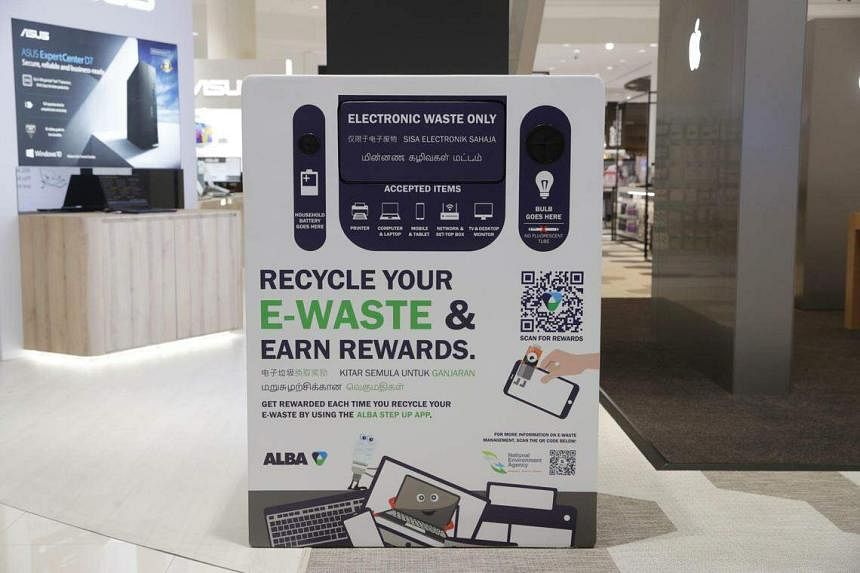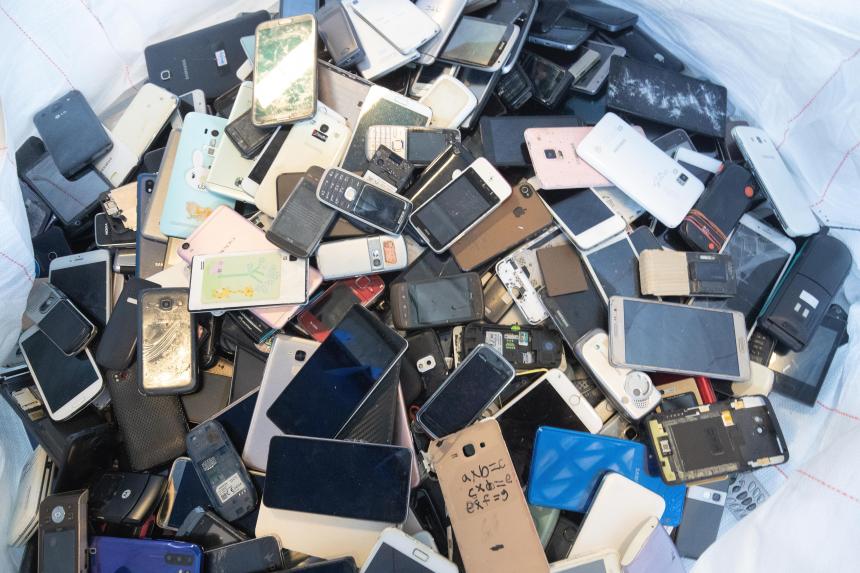SINGAPORE – Humanity’s appetite for electronic gadgets and appliances, from phones to refrigerators to air-conditioners, is creating a growing mountain of e-waste that is causing pollution and billions of dollars in valuable materials being discarded, a United Nations report released on March 20 said.
The UN’s Global E-waste Monitor report said the generation of electronic waste is rising five times faster than what official recycling rate figures show. Millions of tonnes of it are also being handled in poorer nations without correct processing sites or procedures.
E-waste is any discarded product with a plug or battery.
In 2022, the amount of e-waste generated globally hit 62 million tonnes – enough to fill 1.55 million 40-tonne trucks. If lined up bumper to bumper, the trucks would encircle the planet at the Equator, according to the report.
Asia is a major source of e-waste – accounting for nearly half of the global e-waste generated in 2022 – and also has a low recycling rate.
Worldwide, the annual generation of e-waste is rising by 2.6 million tonnes annually, and is on track to reach 82 million tonnes by 2030.
In 2022, e-waste comprised 17 million tonnes of plastic, and 14 million tonnes of other materials such as minerals, glass and concrete.
Metals comprised about half of the e-waste total at 31 million tonnes – with a total value of US$91 billion (S$122 billion), including US$19 billion worth of copper, US$15 billion in gold and US$16 billion in iron embedded in the discarded products.
Heavy metals used in electronics such cadmium, lead, chromium and mercury, and toxic chemicals in plastic components, can cause environmental and health hazards when dumped or incinerated.
Globally, just 22.3 per cent, or 13.8 million tonnes, of all e-waste was documented as formally collected and recycled in an environmentally sound manner in 2022, leaving US$62 billion worth of recoverable natural resources unaccounted for and increasing pollution risks to communities worldwide, the report said.
Large amounts of e-waste are handled informally around the world. For example, 18 million tonnes of e-waste are dismantled in low- and lower-middle income countries with no e-waste management infrastructure.
Informal or unregulated recycling involves individuals or operations that dismantle and dispose of e-waste outside of government supervised waste management systems. While such contributions to e-waste recycling can be significant, this stream is not generally monitored by governments or reflected in official data.
The concern is that informal recycling of e-waste can prove toxic for workers and pollute the environment.
“Too often, informal recycling results in very low resource-efficiency rates and thus does not meet environmental or health and safety standards,” the report noted.
Conversely, environmentally sound e-waste management systems “prevent damage to the environment and help recover secondary raw materials and avoid emissions”.
For instance, reusing metals again does away with the need to process millions of tonnes of ore from mines, reducing environmental degradation caused by mining, and cutting emissions by eliminating the transport and processing of mineral ores.

Recycling of plastics, which are made from fossil fuels, and properly disposing of planet-warming refrigerants used in air-conditioners and refrigerators, can also cut greenhouse gas emissions.
Yet, despite these benefits, the report predicted a drop in the documented collection and recycling rate from 22.3 per cent in 2022 to 20 per cent by 2030.
Part of the reason for this is the widening difference in recycling efforts relative to the staggering growth of e-waste generation worldwide.
For example, formally documented collection and recycling rates in Europe reached 42.8 per cent in 2022. In Asia, it was 11.8 per cent, and less than 1 per cent in Africa.
Challenges contributing to the widening gap include technological progress, higher consumption, limited repair options, shorter product life cycles, design shortcomings and inadequate e-waste management infrastructure, the report said.
Many people own and use multiple electronic devices, and the increasing interconnectivity of urban and remote areas has led to a rise in the number of devices and objects linked to the Internet.
Dozens of countries, including Singapore, have rolled out extended producer responsibility (EPR) schemes.
This important policy solution holds producers of certain electrical and electronic equipment responsible for ensuring the proper collection and treatment of products at the end of the device or appliance’s life.
Singapore produces about 60,000 tonnes of e-waste a year, and introduced an EPR scheme in 2021. This involves the collection of products such as old TVs, computers, washing machines and refrigerators, a spokesperson for the National Environment Agency (NEA) said.
“Businesses have take-back arrangements with their vendors when they refresh their technology. The vendors either refurbish the old equipment and resell them, or send the equipment to recyclers,” the spokesperson said.
Across the island, there are now more than 800 collection points for e-waste. Items are collected by an NEA-approved company and sent to local e-waste recyclers.
Recyclers here must not transfer e-waste to a foreign recycler, unless the foreign recycler has the capability and technology to treat the e-waste to a standard that is the same as or better than that stipulated under Singapore law.

As at December 2023, more than 16,000 tonnes of regulated consumer e-waste have been collected under the EPR scheme since its inception, the NEA spokesperson said.
To date, 81 countries have a national e-waste policy, legislation or regulation, and 67 also have laws supporting EPR, the report said.
“In countries where legislation included collection targets, the average collection rate was much higher at 35 per cent, compared to 22.3 per cent worldwide,” the report said.
However, the enforcement of e-waste policy is key, and so is improving the low level of awareness about e-waste globally.
“The gap between awareness and actual action and implementation remains huge, as many high-income countries have experienced,” the report said.
The NEA said it is stepping up outreach and engagement efforts to encourage e-waste recycling and raise public awareness of its importance.


